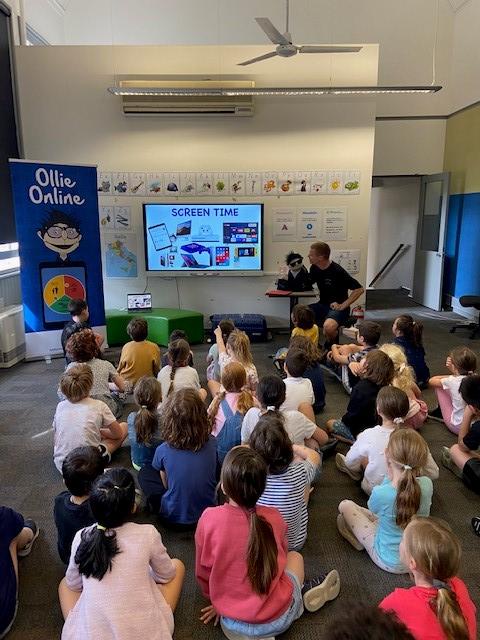Cyber Safety
Keeping your Children Safe Online

Cyber Safety
Keeping your Children Safe Online
Each newsletter this term we will sharing with you the wide range of resources and supports that exist for families to keep their children cyber safe.
As parents and carers, you face the incredibly difficult task of balancing demands to access technology and social media with the concerns of supervision and keeping your children safe.
Yesterday was the first day of the Cybersafety workshops conducted at school. The sessions were really engaging and very informative for the students about how they can be safe online. The remaining grades will have participated in their sessions today and hopefully will be able to share their learning with you after school.


Tonight is the parents-only presentation delivered by Carley McGauran psychologist and Martin McGauran a primary school educator. This session for parents and carers is themed 'Cyber Safety: Raising Kids in a Digital World' and is on tonight Wednesday the 24th November at 7.00pm. REGISTER HERE http://bit.ly/stkilda2021
There is also a wealth of other resources and webinars available for parents to help their children navigate this new world. The Federal Government e-Safety commissioner hosts a number of great videos , webinars and tips for parents.
1. Start the Chat
Get into the habit of talking about online safety as a family, so your child feels comfortable coming to you if they ever need help working out an issue. It’s never too early to introduce good online habits such as respect, empathy, critical thinking, responsible behaviour and resilience. As your child grows older, eSafety’s advice about hard to have conversations will help with some of the tricky topics like sending nudes, online pornography and contact from sexual predators.
2. Create a family technology agreement
Creating a Family Technology Agreement can help you and your kids decide together when and how digital technology will be used at home. As a family, brainstorm easy-to-follow rules and display them where everyone will see them. Your agreement could cover things like: time limits, apps your kids are allowed to use and online behaviour. Families with younger children can download a template to guide the conversation.
3. Set up parental controls
Parental controls let you monitor and limit what your child sees and does online. It’s best to use them in combination with the other online safety strategies listed here. Taming the technology can help you understand your options. Grab a device and get started with our guides to setting up parental controls on devices and accounts or in social media, games and apps.
4. Choose games and other apps carefully
Use eSafety’s App checklist for parents to think about the positives and negatives when your child asks to download a new game or other app. The checklist covers things like age ratings, managing privacy settings and reporting abuse in-app. You can also use The eSafety guide to check and set up safety features with your child.
5.Use digital technology together
Exploring or playing on devices or online with your child can be a positive experience that promotes learning and development. Ask questions, be curious and get involved.
Are you worried your child may be spending too much time online?
Please follow this link to access Time online | eSafety Commissioner
-tips for parents and carers for
-signs to watch for
Setting boundaries for digital device use in your home